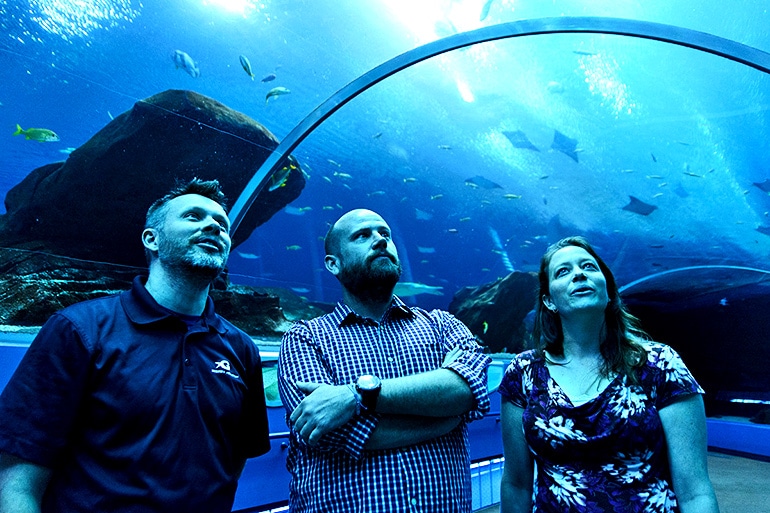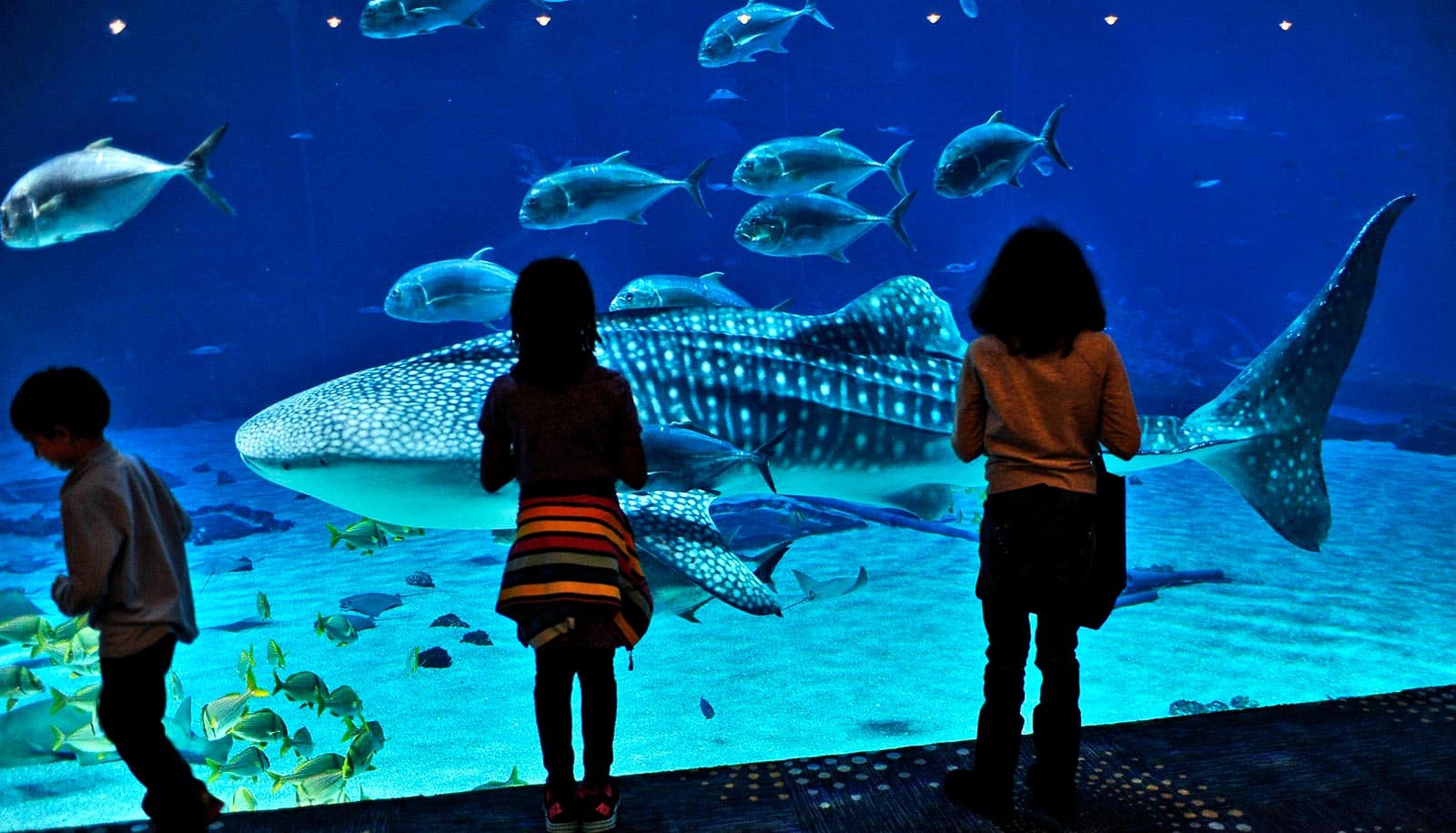Researchers have discovered that the bacteria in the water in a large exhibit at Georgia Aquarium are similar to those that exist naturally in the ocean.
Sea creatures need to go to the bathroom, too, and in aquariums, that creates the task of cleaning the water of waste like ammonia, nitrites, and nitrates. Good bacteria break down nitrogen compounds at aquariums, and the new study shows that some bacterial communities there emulate those in oceans surprisingly well.
“It was phenomenal. I didn’t expect this,” says Frank Stewart, an associate professor in Georgia Tech’s School of Biological Sciences and principal investigator of the study. “The microbial communities are seeded from microbes coming from the animals and their food in an aquarium that does not tap into the ocean. But these looked like natural marine microbial communities.”
That’s happy news for the thousands of sea fauna, including whale sharks, manta rays, and a sea turtle named “Tank,” who live in Georgia Aquarium’s Ocean Voyager, the largest indoor oceanic exhibit in the United States with nearly 24 million liters (6.3 million gallons) of constituted sea water. The researchers analyzed two bacterial communities in the exhibit over time and studied their water cleaning abilities.

The Ocean Voyager exhibit houses whale sharks, the largest fish species in the world, as well as an endangered species conservationist are working to preserve.
‘Real game changer’
“The bacterial analysis has been a real game changer for Georgia Aquarium,” says Eric Hall, who collaborated on the research and is senior director for life support systems and water quality for the aquarium. “We now have a much better understanding of what this beneficial bacterial micro-community looks like that is living in the habitat water and in our filters.”
To stay fresh, Ocean Voyager’s water cascades through a series of cleaning processes. In the tank, as in oceans, bacteria break down excrement, ammonia, and other waste, then the aquarium exhibit’s water flows through filters that remove more things, including nitrites.
The water also flows through special bacterial reactors, and by then it’s free from most everything but nitrates, which can become toxic if allowed to build up to high concentrations. In the reactors, colonies of bacteria, the focus of this study, break nitrates down.
The reactors, or “pads,” have nearly no oxygen and offer bacteria sulfur as food. So, anaerobic bacteria gather there to “eat” the sulfur and “breathe up” the nitrates to form nitrogen gas, which can bubble up to the atmosphere. Earth’s atmosphere is naturally about 78 percent nitrogen.
Astounding diversity
The bacterial communities the researchers encountered in the two pads they studied dashed expectations. For one, the researchers thought they might find both pads dominated by an iconic denitrifying bacterium called Thiobacillus denitrificans, which can help hand-seed professional and home aquariums. They did not.
“It certainly popped up in our systems, but the genes for the tools that Thiobacillus denitrificans carries to do these processes were widely distributed among many different kinds of microbes,” says Stewart. “The diversity levels were just outstanding.”
The compositions of bacterial communities in the two pads were also virtually each other’s polar opposites.
“In one of the pads we had one species become around 90 percent of the community,” says Andrew Burns, a postdoctoral researcher in Stewart’s lab. It was a strain related to a species called Thiobacillus thioparus. “The other pad had a much more diverse community with a lot of different species and even genera.” (Genus is the taxonomic category above species.)
“Even looking at some of the main contributors, there was one genus of Sulfurimonas (bacteria) and even those had a ton of different species, about 150 species or strain variants instead of say, ten, which one might have expected,” Stewart says.
Two teams
Like sports teams, the two bacterial communities assembled different players. One team had one big star player, and the other team spread the skills needed for all the chemical steps across the squad.
“We found that in a lot of these systems a single bacterium is going to become the main contributor, and that it will outcompete everybody else and become the majority of the community and do most of the metabolism,” Burns says. “In our study, this pad turned out to be better at denitrification.”
But it could work the other way around, that particular mixed bacterial communities may work more efficiently, Burns says, and even in systems where one player is the star, variety can add strength.
“It can give that bacterial system a backup,” Burns says. “If it relied on only one big player, if something happened to it, the whole system could crash.”
“What is really interesting is how many of a certain species exists in our system and especially finding out what they are doing,” Hall says. “These microscopic creatures are not just hanging around but actually doing beneficial things for our water that we didn’t understand this thoroughly before.”
It’s too early to make recommendations, but given the initial observations, the researchers think that anyone trying to optimize bacteria for the aquarium may not necessarily have to throw one great organism into a system from the outside. Coaxing a great bacterial community to self-assemble instead might maximize cleaning power.
The researchers would like their continuing work to help aquarium operators everywhere optimize bacterial colonies for maximum water cleansing. The researchers and Georgia Aquarium, which is a non-profit sea life organization, published their analysis in the journal Applied and Environmental Microbiology. Georgia Aquarium will share the results with other aquariums and universities near them.
The Simons Foundation, the National Science Foundation, and the Teasley Endowment funded the research.
Source: Georgia Tech



